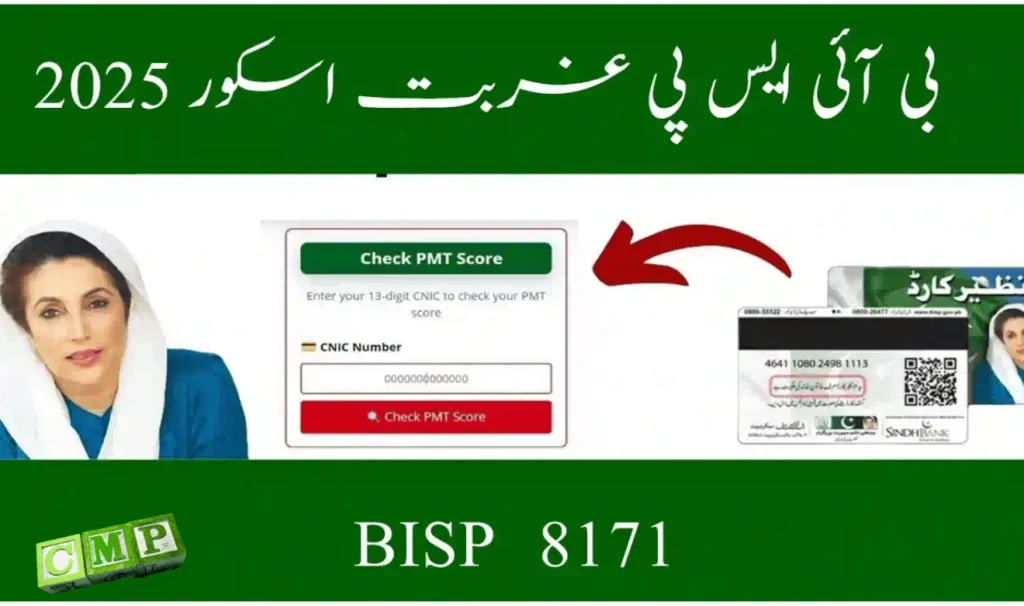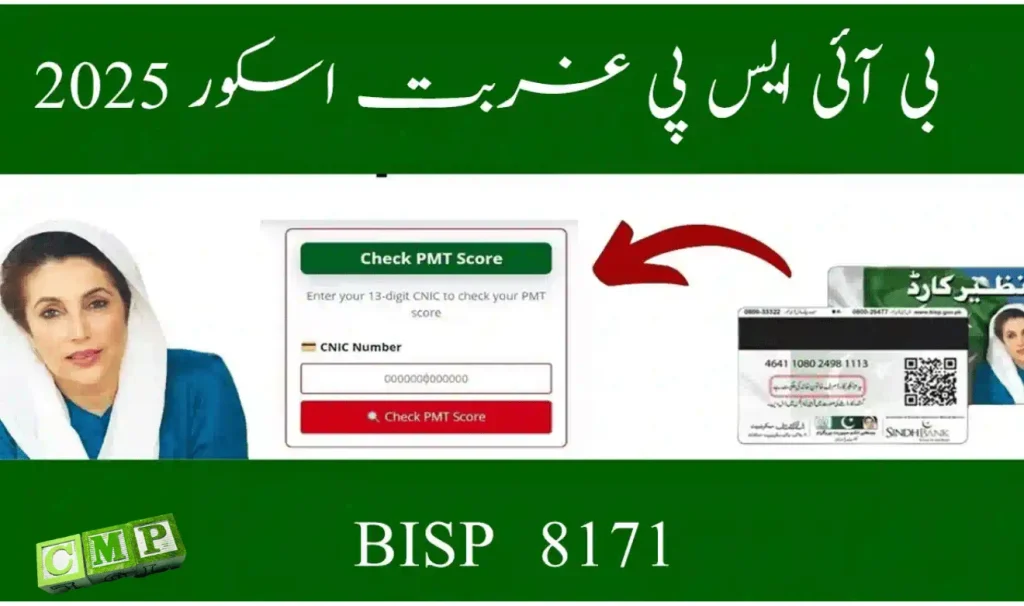The Benazir Income Support Programme (BISP) is Pakistan’s largest social safety net. It provides cash payments to millions of families who struggle with food, rent, healthcare, and education expenses. But one important factor decides whether a family gets this help or not: the poverty score.
This score is at the core of BISP’s eligibility system. It reflects how poor a household is based on its living conditions, family size, assets, and other indicators. If the score is low enough, payments are approved. If it is too high, payments may be blocked or denied.
For anyone relying on BISP or planning to apply, understanding the poverty score is essential. Let us dive deep into what it is, how it works, and why it plays such a major role in payment approvals.
What Is the BISP Poverty Score?
The poverty score is a numerical value between 0 and 100 that shows the economic condition of a household. It comes from a survey known as the Proxy Means Test (PMT).
Instead of asking families to prove exact income—which is difficult in informal or rural economies—the PMT asks about lifestyle, assets, and housing conditions. This information is then converted into a score.
- A lower score means the household is poorer.
- A higher score means the household is better off.
BISP uses this score to identify which families deserve financial support.
How the Poverty Score Is Calculated
The score is calculated through household surveys under the National Socio-Economic Registry (NSER). Families are asked a series of questions such as:
- How many people live in the house?
- What type of house do you live in (pucca, semi-pucca, or katcha)?
- How many rooms are in the house?
- What kind of toilet facility do you use?
- Does your family own livestock or agricultural land?
- What is the highest education level among household members?
- Do you own items like a refrigerator, television, or motorbike?
Each answer contributes positively or negatively to the household’s score. For example:
- Owning fewer assets → lowers the score
- Having more dependents → lowers the score
- Owning land or appliances → increases the score
- Living in poor housing conditions → lowers the score
The combined result becomes the poverty score.
The Poverty Score Cutoff
BISP sets a cutoff score to decide who qualifies for payments. Traditionally, the cutoff was set at 16.17. Families with scores at or below this level were considered among the poorest and therefore qualified for assistance.
Over time, programs such as Ehsaas Kafaalat expanded eligibility. In some cases, families with scores up to 32 or even 40 were included, especially if they were vulnerable groups such as widows, orphans, or people with disabilities.
This flexibility allows BISP to reach more families during crises such as inflation, natural disasters, or pandemics.
Why the Poverty Score Matters for Payment Approvals
The poverty score is not just a survey number—it directly affects payments.
- If your score is below the cutoff:
You are eligible, your payments are approved, and you appear in the active beneficiary list. - If your score is above the cutoff:
You are not eligible, your payment request is declined, and you may only qualify if thresholds change or your data is updated. - If your score changes after a review:
Payments may stop if the new score is higher, or they may start if the score drops below the cutoff.
This makes the poverty score the single most important factor in deciding approvals.
Frequently Asked Questions
How do I check my poverty score?
Send your CNIC number to 8171 via SMS. The system will reply with your eligibility status.
Can I improve my poverty score?
You cannot manipulate it, but if your financial condition worsens, updating your NSER data may lower your score.
Why did my payments stop even though I was receiving them?
This happens when your score is rechecked and found to be above the cutoff, or if your CNIC expired.
What if my score is too high but I am still struggling?
BISP works with fixed cutoffs. However, new programs sometimes revise thresholds to include more families.
The Role of NSER in Poverty Scoring
The National Socio-Economic Registry (NSER) is the database that stores household information. It is updated through surveys and dynamic registration campaigns.
If your household’s data is outdated, your poverty score may not reflect your real situation. For example:
- A new child is born but not added to the record.
- A family member dies but is still listed.
- Your address changes but is not updated.
- Your income drops but remains recorded at the old level.
In all these cases, your score may be higher than it should be, blocking payments. Updating NSER data keeps your record accurate and your eligibility intact.
Real-Life Example of Poverty Score Impact
- Shazia’s case: A widow with three children living in a katcha house has a score of 12, making her eligible. With her cash grant, she buys food and pays for school.
- Imran’s case: A daily wage worker in Karachi owns a semi-pucca house and a motorbike. His score is 27. Initially, he was not eligible. But when the threshold was expanded to 32, he was included and began receiving support.
These examples show how the poverty score directly shapes lives.
Tips to Stay Eligible for BISP Payments
- Update NSER data regularly: Add new children, update CNIC renewals, report deaths or relocations.
- Keep your CNIC valid: An expired CNIC can block payments even if your score is low.
- Check eligibility through 8171 SMS: Stay updated on your status.
- Keep supporting documents ready: B-Forms for children, utility bills, and family certificates may be required.
- Avoid fraud: Updates are free at official centers, so do not pay agents.
Why the Poverty Score System Works
The poverty score system is not perfect, but it is one of the most reliable ways to ensure fairness. Without it, cash transfers could be influenced by favoritism or corruption. By using a data-driven formula, BISP can:
- Identify the poorest households.
- Reduce fraud and duplicate entries.
- Expand programs based on real needs.
- Distribute funds fairly across Pakistan.
Independent evaluations confirm that poverty scores have improved the accuracy of aid distribution and reduced extreme poverty in many communities.
Final Thoughts
The BISP poverty score 2025 is the backbone of Pakistan’s largest welfare program. It decides whether your payments are approved or blocked. Families with lower scores are prioritized, while those above the cutoff may have to wait until programs expand or their circumstances change.
To protect your eligibility, you should keep your NSER record updated, renew your CNIC on time, and check your status through the 8171 SMS service.
The poverty score may look technical, but its purpose is simple: to ensure that help reaches the families who need it most. For millions of Pakistanis, this score is not just a number—it is the key to survival.

